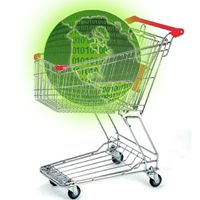Before we get into a complete discussion of e-commerce, it is helpful to have a good mental image of plain old commerce first. If you understand commerce, then e-commerce is an easy extension.
Merriam-Webster's Collegiate Dictionary gives a few definitions of commerce:
com.merce n [MF, fr. L commercium, fr. com- + merc-, merx merchandise] (1537) 1: social intercourse: interchange of ideas, opinions, or sentiments 2: the exchange or buying and selling of commodities on a large scale involving transportation from place to place 3: sexual intercourse
We tend to be interested in the second definition, but that third one is interesting and unexpected -- maybe that's what all of the hype is about?
So commerce is, quite simply, the exchange of goods and services, usually for money. We see commerce all around us in in millions of different forms. When you buy something at a grocery store you are participating in commerce. In the same way, if you cart half of your possessions onto your front lawn for a yard sale, you are participating in commerce from a different angle. If you go to work each day for a company that produces a product, that is yet another link in the chain of commerce. When you think about commerce in these different ways, you instinctively recognize several different roles:
- Buyers - these are people with money who want to purchase a good or service.
- Sellers - these are the people who offer goods and services to buyers. Sellers are generally recognized in two different forms: retailers who sell directly to consumers and wholesalers or distributors who sell to retailers and other businesses.
- Producers - these are the people who create the products and services that sellers offer to buyers. A producer is always, by necessity, a seller as well. The producer sells the products produced to wholesalers, retailers or directly to the consumer.
You can see that at this high level, commerce is a fairly simple concept. Whether it is something as simple as a person making and selling popcorn on a street corner or as complex as a contractor delivering a space shuttle to NASA, all of commerce at its simplest level relies on buyers, sellers and producers.


